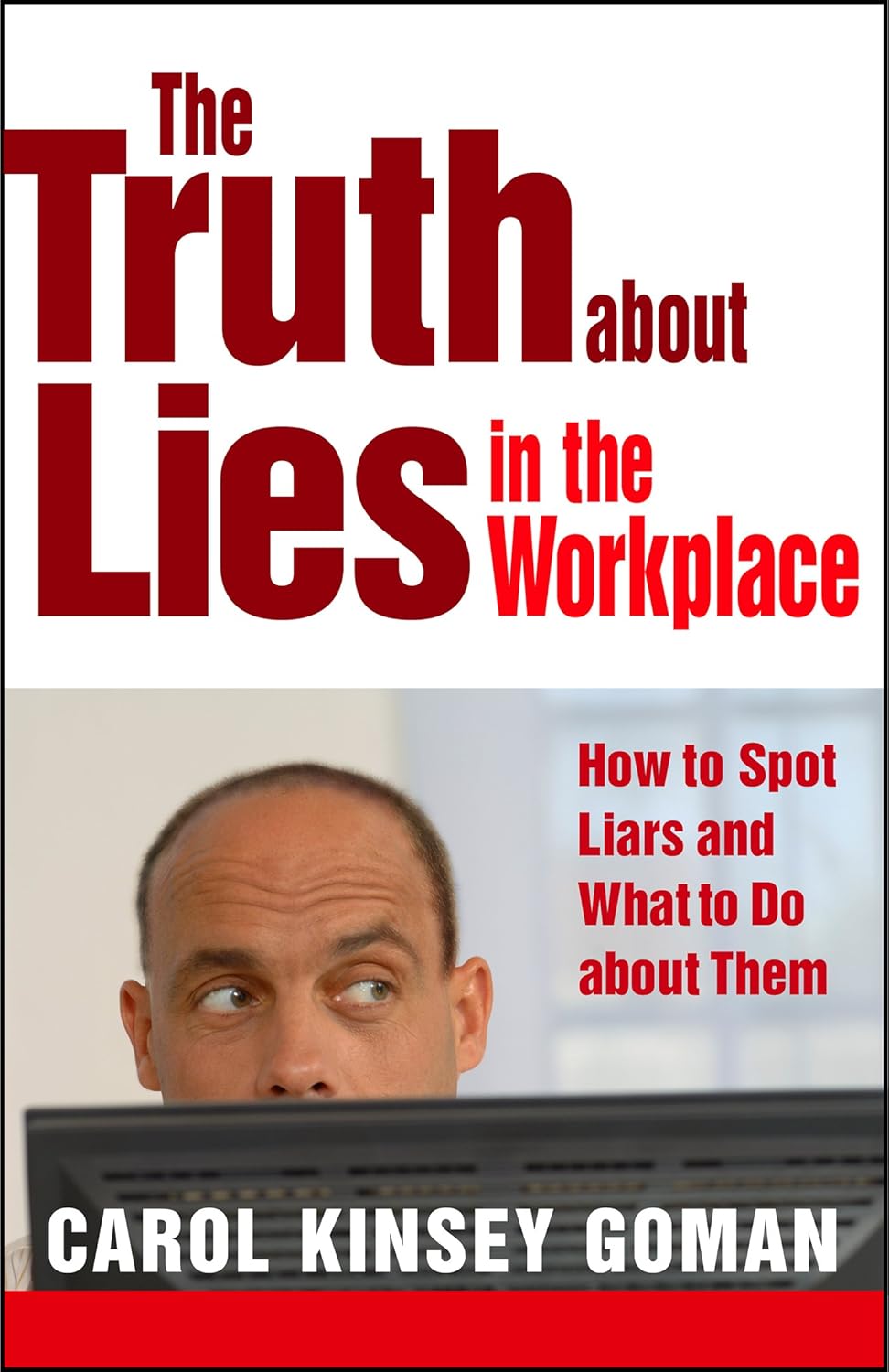 It’s hard to be good in a bad world.
It’s hard to be good in a bad world.
It may be even harder to tell the truth in a workplace full of liars.
Lies, half-truths and deceptions run rampant in the workplace, according to Carol Kinsey Goman, Ph.D., an authority on body language in business and author of the provocative new book, The Truth About Lies in the Workplace.
In fact, you’re probably one of the liars—especially if you’re a leader in your organization.
Even if you don’t think you make a practice of fibbing (and we all lie at some point says Carol), you may be perceived as not telling the truth.
Based on the research Carol conducted for her book, 67% percent of survey respondents said that the senior leaders of their organizations didn’t always tell the truth.
These employees complained most about leaders’ lies of omission and misrepresentation—“executives either didn’t tell the whole truth or they presented an overly optimistic view of the company’s current state and future prospects,” Carol reports in her book.
According to these employees, when leaders omit negative information, they’re telling half-truths—or lies. When the leaders gloss over the truth, they are lying.
Well, not all untruths are lies, as Carol writes and I agree.
Based on our experiences, perspectives and belief systems, we see different things looking at the same situation at the same time.
Remember the fable of the blind men and the elephant? Based on which elephant’s body part the men touch, they have a totally different description of the animal.
We need to respect others’ perspectives, experiences and belief systems, which is one of the morals of this fable.
We also need to show leaders respect and have compassion for the tightrope they’re walking in their jobs.
Leaders may withhold information for a number of reasons, which may seem valid to them but not to others. But when leaders omit information, are they acting in a deceitful manner? It depends.
Calling all acts of omission and overly optimistic statements as lies is harsh, as I’m sure Carol would agree.
After all, people look to leaders to be hopeful about the future. If the leaders become “Debbie Downers” or “Pessimistic Petes,” everyone—leaders, employees, shareholders, customers and all other stakeholders—might as well throw in the towel and move on to something else.
In fact, neuroscience supports taking an optimistic perspective so we won’t wallow in the awful. The experts call this “reappraisal.”
When you reappraise, you position issues as much as possible from the positive perspective rather than the negative—although you definitely don’t want to put lipstick on a pig, as the saying goes.
When you paint a picture of the possibilities, you create a safety zone for people. Especially with encouragement and recognition, they’ll start to think bigger, more creative thoughts and feel more self-assured and self-reliant in their ability to rise to the challenges facing them and their organization. (My experience with coaching and consulting clients shows that this is an incredibly powerful technique.)
So what to do to avoid being perceived as a leader who “lies”? Try these five tips.
- Keep in mind that the truth is not black or white; it probably has more than 75 shades of gray. In our fast-paced, multi-cultural, transparent VUCA (volatile, uncertain, complex and ambiguous) world, we careen from information excesses to knowledge/wisdom deficits. Rather than talk about “finding the truth,” look for facts, data and signs that describe the current reality.
- Look at situations from multiple perspectives. Then ask yourself what information different people would find interesting and useful in their situation, especially if they need—or want to—take action. And try to share more information, especially in a way that encourages, not shuts off, conversation.
- Be balanced. If you are prone to irrational exuberance, temper it, especially when signals point to problems either now or on the horizon.
- Practice candor and encourage it in others. If you read Carol’s new book The Truth About Lies in the Workplace, you’ll get some great tips plus practical suggestions on how to defend yourself and your organization from backstabbers, credit-taking colleagues and bosses and cheating job applicants.
- Acknowledge others for making efforts to make the workplace a better place. If people start to make small efforts, they can start to build new positive habits. They need reinforcement along the way so they’ll continue their efforts and bring others along with them. Don’t be like the Neanderthal CEO I worked for years ago who thought employees should give up their Saturdays for company training and only wanted to reward for results, not efforts.
Since perception is in the eye of the beholder, what actions are you taking to make sure others consider you trustworthy and honest?

0 Comments